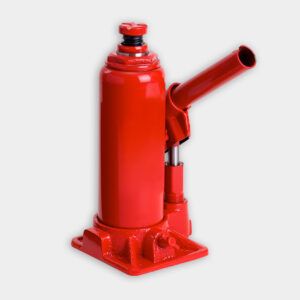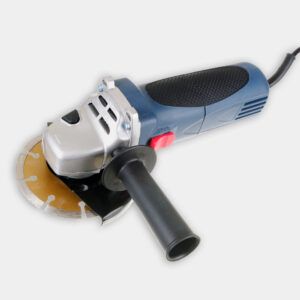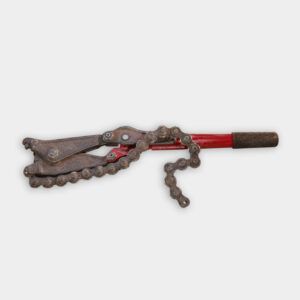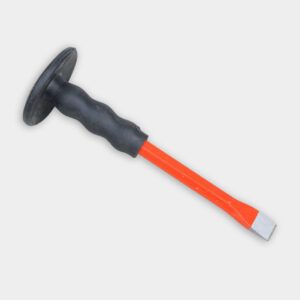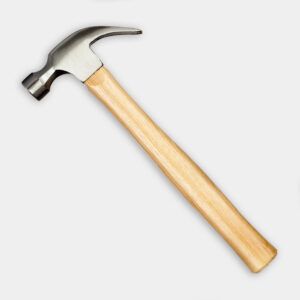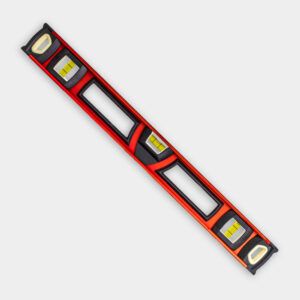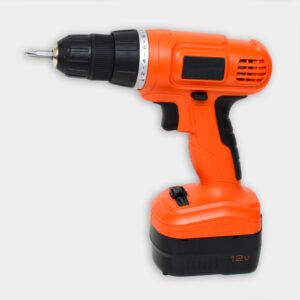A damaged carrying beam can compromise your home’s structure and safety. Wwith some know-how and the correct materials and tools, you can repair the damage and restore your home’s stability. This Old House expert Tom Silva demonstrates this process in the video above, plus how to replace a rusty lally column and handle missing bridging in a basement.
Understanding the Structure of Your Home
Before making repairs, take time to learn how your home’s structure works. This will help you better understand each component of the project and the possible damage.
The Main Carrying Beam
The main carrying beam is a major structural element. It runs the length of your house, typically resting on the foundation at both ends. This beam bears a significant portion of your home’s weight and transfers it to the foundation.
Floor Joists and Joist Hangers
Floor joists are horizontal pieces that support the floor above. They’re attached to the main carrying beam using joist hangers, which are metal brackets designed to hold the joists in place securely. Together, these components distribute the floor’s weight and its contents across the beam.
Lally Columns
Lally columns are vertical supports that help break up the span of the main beam. These adjustable metal columns can be fine-tuned to ensure proper support along the beam’s length. However, as Silva says, older adjustable columns may be prone to rust, which can compromise their strength.
Step 1: Gather Tools and Materials
You’ll need the following tools to repair a damaged carrying beam:
- Bottle jack
- Cold chisel and hammer
- Drill/driver
- Flat pry bar
- Large pipe cutter
- Level
- Power grinder
You’ll also need the below materials. Lally columns and the lumber used for the bridging can be found at a local home center or lumberyard.
- Angle iron (cut to size)
- Lag screws
- Masonry screws (for securing column base)
- Metal plates
- New lally column
- Wood for bridging
Step 2: Assessing the Damage to the Beam
Before beginning any repairs, thoroughly assess the damage to your carrying beam and supporting structures.
Look for signs of damage, such as cracks, holes, or notches. In the video, Silva discovers a heating duct improperly running through the main beam, compromising its strength.
Inspect lally columns for signs of rust or damage, especially at the base. Also check for missing or damaged bridging between floor joists.
Examine the connections between floor joists and the main beam. Ensure that joist hangers are properly installed and that there are no significant gaps between the joists and the beam.
Step 3: Repairing the Carrying Beam
Before starting the repair, support the structure using a bottle jack and a temporary post. Remove any obstructions, such as pipes or wires, running through the damaged area. Clear the work area to ensure safe and easy beam access.
To reinforce the beam, get a piece of angle iron cut to the length of the beam being repaired. Position the angle iron against the side of the beam, and use lag screws to secure the angle iron to the beam.
Silva does this by using a 4-by-6-inch angle iron that’s 3/8-inch thick. This substantial piece of steel effectively compensates for the damage caused by the improperly installed heating duct.
Addressing Missing Bridging
Proper bridging should help prevent squeaks and bounces. Bridging serves several important functions:
- It transfers loads between adjacent joists.
- It prevents joists from twisting under load.
- It helps create a more stable and rigid floor structure.
Installing New Bridging
To install new bridging, cut pieces of lumber to fit snugly between the joists. Then, position the bridging pieces so they form an X pattern between joists. Nail or screw the bridging securely in place.
When cutting and notching joists, Silva says that a hole can be no more than 1/3 the depth of the structure and cannot be within 2 inches of an edge. For notches, the maximum notch depth is 1/2 the depth of the structure, and no notches can be made in the middle 1/3 of the span.
Replacing a Rusty Lally Column
If you discover a rusty or damaged lally column, you’ll need to replace it to ensure proper support for your home’s structure. To remove the old column, support the beam with a bottle jack and temporary post. Cut out the old column using a grinder, and clean the area where the old column was located.
Installing the New Column
Follow these steps to install the new column:
- Measure and cut the new column to the correct length using a large pipe cutter.
- Smooth the cut end with a cold chisel and hammer.
- Place the new column on metal plates at the top and bottom.
- Slowly transfer the weight from the temporary support to the new column.
- Check that the new column is plumb before fully loading it.
- Secure the metal plates to the beam and floor with appropriate screws.
Safety Considerations
When undertaking structural repairs, always wear appropriate personal protective equipment, such as safety glasses, work gloves, dust mask or respirator, and steel-toed boots.
Make sure the structure is properly supported at all times. If you’re unsure about your home’s stability during repairs, consult a structural engineer or professional contractor.
Before starting, locate and shut off any affected utilities. This includes water lines, electrical wiring, and gas pipes that may run through or near the work area.
Keeping Your Home’s Structure Intact
Quickly handle issues such as damaged beams, rusty columns, and missing bridging to keep your home safe.
Inspect Regularly
Even if your home’s structure has recently undergone work, it’s wise to conduct regular inspections. This can prevent minor issues from becoming major structural problems that are dangerous and expensive.
Consult Professionals
While many DIY repairs are feasible for experienced homeowners, some structural issues may require professional input. Consulting with a structural engineer can provide assurance that your home is up to code.
